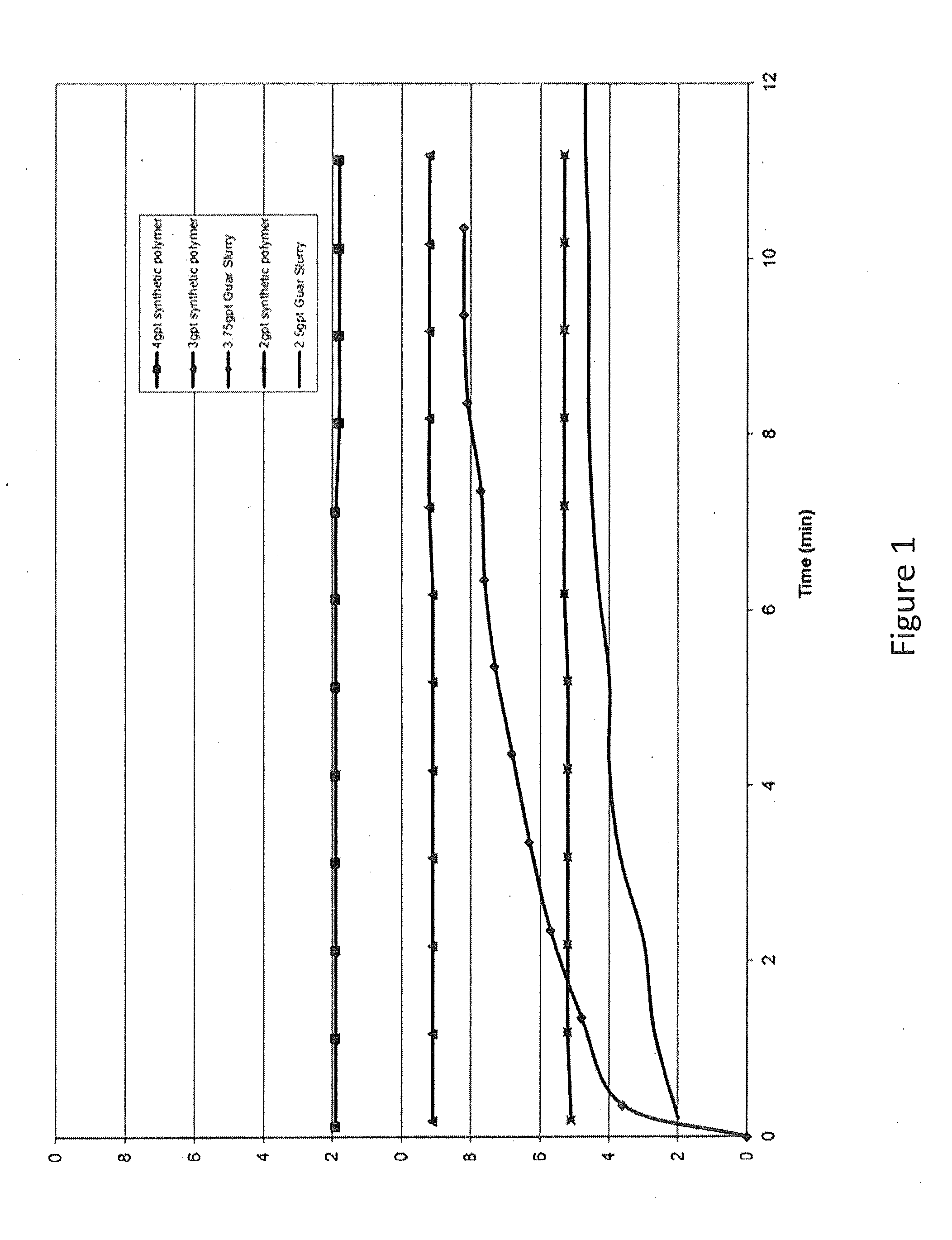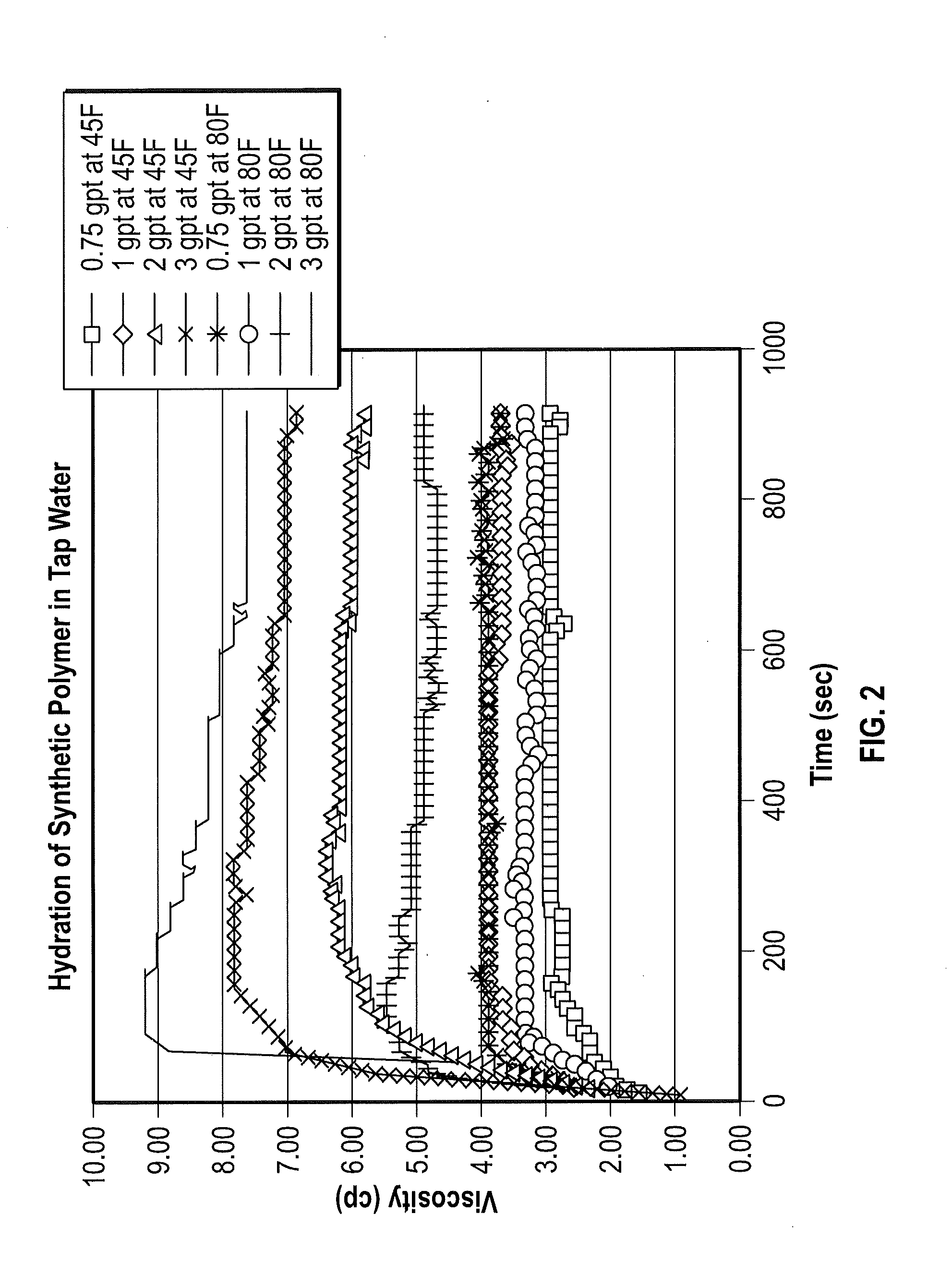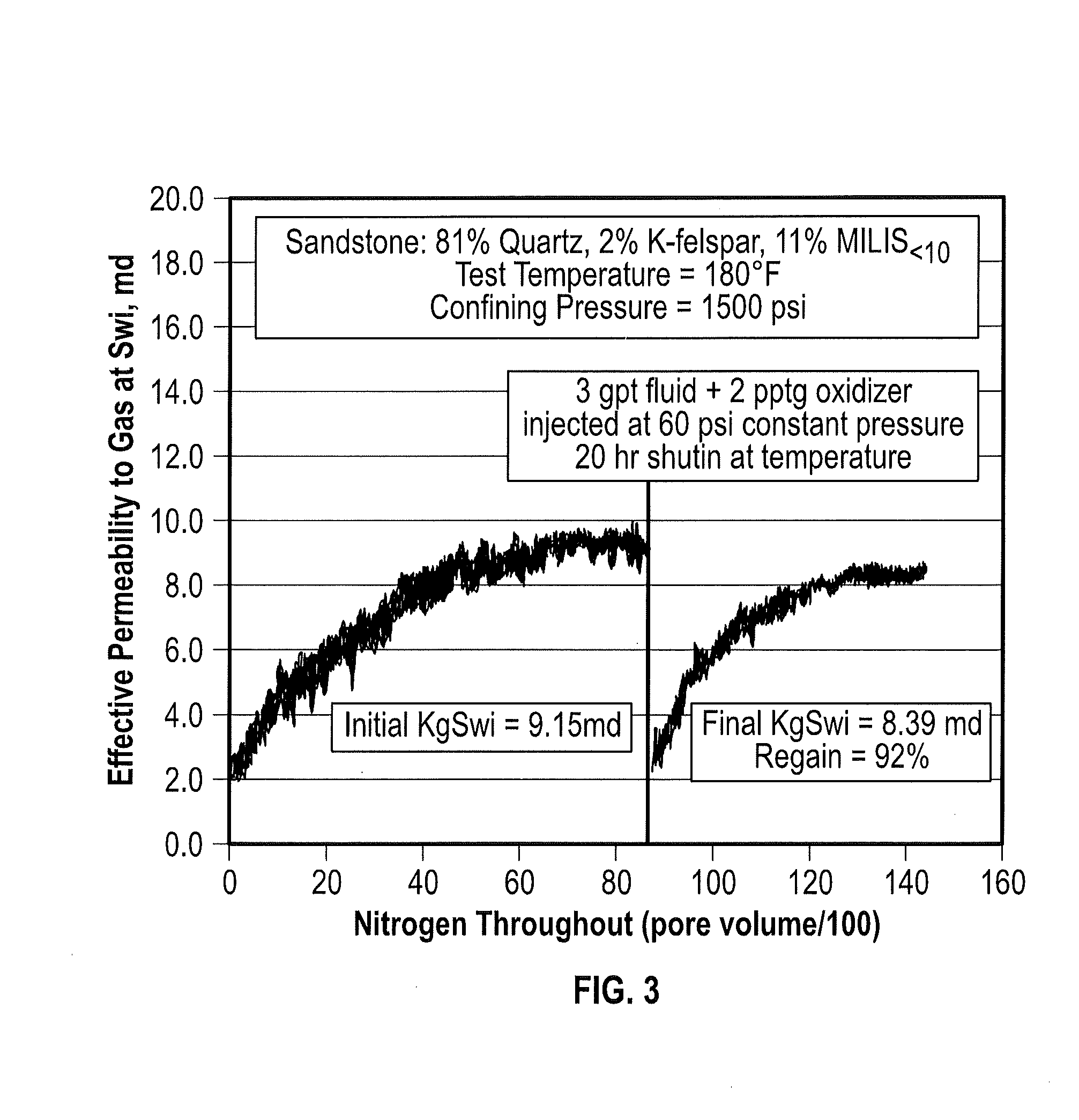Fracturing Fluids and Methods For Treating Hydrocarbon-Bearing Formations
- Summary
- Abstract
- Description
- Claims
- Application Information
AI Technical Summary
Benefits of technology
Problems solved by technology
Method used
Image
Examples
example 1
[0056]This example was conducted to show the rapid hydration of the polymer when compared with guar which is a commercially available naturally occurring polymer. In this example, hydraulic fracturing fluids comprising the synthetic polymer disclosed herein were compared with hydraulic fracturing fluids that use guar (a naturally occurring polymer). The polymer is a synthetic polymer and comprises a polyacrylamide. It is commercially available as MaxPerm-20® from Baker Hughes, Inc. The carrier fluid is water.
[0057]For this example, the synthetic polymer MaxPerm-20® was dissolved in water as shown in the Table 1 and viscosity measurements were made. The viscosity measurements were made at ambient temperature using an Ofite rheometer at 300 revolutions per minute (rpm) and performed according to American Petroleum Institute standard API RP-39. The viscosity results are provided in the Table 1 and in the FIG. 1. The comparative samples contain guar dissolved in water. These results are...
example 2
[0060]This example was conducted to demonstrate the dynamic hydration properties of the synthetic polymer. This polymer used in this example is the synthetic polymer MaxPerm-20®. The carrier fluid was water.
[0061]In this example, the viscosity was measured upon the introduction of different amounts of the synthetic polymer to the water. The viscosity thus measured during the hydration of the synthetic polymer by water. The resulting viscosity is therefore a measure of dynamic hydration of the synthetic polymer by water. The polymer was dissolved in the water at 45° F. (7.2° C.) and 80° F. (26.6° C.), during which the viscosity was measured. The results are shown in the FIG. 2. The FIG. 2 is a graph depicting the dynamic hydration viscosity at temperatures of 45° F. and 80° F. versus time for the synthetic polymer in water. The concentration of the polymer in the water at each of the foregoing temperatures was 0.75 gpt, 1 gpt, 2 gpt or 3 gpt respectively.
[0062]From the FIG. 2 it may ...
example 3
[0063]This example was conducted to evaluate possible formation damage from the use of the synthetic polymer in a fracturing fluid and to compare it with the damage caused by the use of guar in a comparative fracturing fluid. In this example, the permeability of a simulated fracture surface comprising 81% quartz, 2% K-feldspar, and 11% MILIS is first measured. The simulated fracture surface is then contacted with the respective fracturing fluid (i.e., a fracturing fluid comprising the synthetic polymer MaxPerm-20® or a comparative fracturing fluid comprising linear guar). The fracturing fluid was then oxidized, decomposed and removed from the simulated fracture surface following which the permeability of the simulated fracture surface is once again measured. The difference between the initial permeability and the final permeability is a measure of the formation damage that the polymer imparts to the fracture surface. The gas used to check the permeability is nitrogen. It is generall...
PUM
 Login to View More
Login to View More Abstract
Description
Claims
Application Information
 Login to View More
Login to View More - Generate Ideas
- Intellectual Property
- Life Sciences
- Materials
- Tech Scout
- Unparalleled Data Quality
- Higher Quality Content
- 60% Fewer Hallucinations
Browse by: Latest US Patents, China's latest patents, Technical Efficacy Thesaurus, Application Domain, Technology Topic, Popular Technical Reports.
© 2025 PatSnap. All rights reserved.Legal|Privacy policy|Modern Slavery Act Transparency Statement|Sitemap|About US| Contact US: help@patsnap.com



